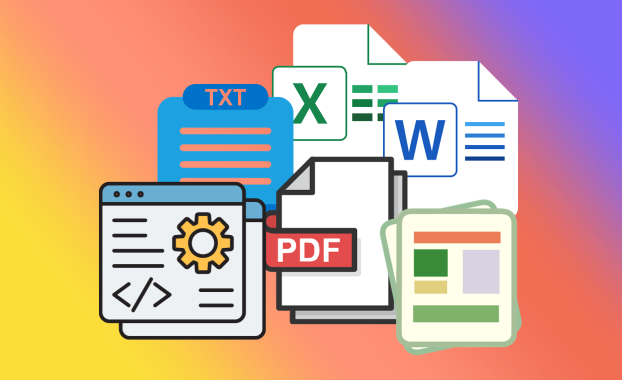As laboratories move to digitized records, it is imperative that all staff adopt archiving best practices in order to reap the benefits that digital systems can offer. Lab archives can lead to enhanced accessibility, efficient data management, and secure long-term preservation - but only if it is executed correctly. This guide walks you through lab archiving best practices so you can build an effective laboratory archive within your ELN.
1. Assess Your Current Records
Good laboratory practice requires that lab electronic records are kept, and that information can be easily accessed in accordance with FAIR data principles - Findable, Accessible, Interoperable, and Reusable. It is important to understand the scope and variety of your records to plan the archiving process. Start by taking stock of your existing records. What kinds of documents, images, and data do you have? Moving from physical records to digital format requires careful thought on how the data will be structured. Folders and paper notebooks have a physical organization that may not directly translate into a digital environment. Instead, you should consider adopting a standardized naming convention and digital folder hierarchy to ensure easy navigation and retrieval of records.
You should consider the ownership of data and access control requirements of individual folders to ensure that only those who need to access data are able to and build processes to ensure that if, for instance, a member of the team leaves the organization, a workflow is triggered to ensure that access is removed. This helps to maintain the integrity of the data as it is easier to track changes, updates, and modifications made to the data. It is also important for security reasons, which we explain in step 4 below.
You will need to Identify regulatory compliance requirements and ensure that your archiving process complies with relevant regulations and standards in your field. But of equal importance, you will need to determine what and when records are no longer required by the business, law or regulation.
2. Categorize Your Data
Different types of data may require different digitization approaches. Categorizing your data — whether it's textual documents, images, or complex data sets — will help streamline the process and ensure that nothing gets overlooked. By grouping similar types of data together, users can better understand the relationships and dependencies between different pieces of information.
There is immense value in being able to find similar samples used by different experiments however this can be very hard to achieve in a paper format. But when digitizing the content it becomes quicker and easier to identify these connections and crossreference experimental records with sample data and your bio/chemical registry.
It could be invaluable for a researcher studying the effects of a particular compound on various cell lines to discover that similar samples were used in unrelated experiments exploring the molecular pathways of different diseases. Digitizing the content allows for the swift identification of these cross-disciplinary connections, enabling researchers to draw valuable insights from seemingly disparate studies. This newfound capacity to discern patterns and correlations not only expedites the research process but also enhances the collective understanding of the broader scientific landscape. This contextual understanding is valuable for researchers, analysts, and other stakeholders who need to interpret and analyze the data.
3. Metadata Integration
In order to ensure that the categorized data is also searchable, you will need to assign relevant metadata to each piece of data. This will enable users to quickly locate and access the information they require, saving time and effort. Relevant metadata examples could be date, experiment type, and researcher names. Users can use search functions to filter and locate specific data sets based on categories, keywords, or metadata, improving the overall efficiency of the archive system.
Metadata can be used to support batch processing and minimize risk. For example, in a pharmaceutical laboratory, each batch of pharmaceuticals undergoes a series of processes, including mixing, reaction, and purification. Metadata associated with batch processing should include details such as equipment used, processing times, and environmental conditions (e.g. temperature, humidity). If contamination occurs in a particular batch, detailed metadata allows the quick identification of the source, helping isolate and address the issue before it affects other batches.
4. Data Security
If you're working in a team or with sensitive data, set appropriate access levels. Only some people need access to every file. When choosing a lab data management solution or Electronic Lab Notebook, make sure it offers the user privileges that are right for you with the ability to create roles and set permissions.
Consider whether authorization measures are needed for any of your digitized records. This security measure ensures that even if unauthorized individuals gain access to the digital archives, sensitive information remains protected and confidential. It is vital for safeguarding sensitive experimental data, proprietary information, and personally identifiable information. Utilizing strong encryption algorithms adds an additional layer of defense against data breaches and unauthorized access, contributing to overall data integrity and compliance with privacy regulations.
You should also establish a routine backup system to prevent data loss and ensure the longevity of your digital archives. Opt for file formats that are widely supported and likely to remain accessible in the future.
5. Training and Adoption
Consider how you will train staff to ensure best practice is maintained. Training laboratory staff on new digital workflows is essential for ensuring the accurate creation and archiving of data.
Staff familiarity with updated procedures promotes consistency, minimizing errors during data entry and ensuring the application of relevant metadata for enhanced searchability. Training also addresses cybersecurity awareness, emphasizing the importance of safeguarding digital data and reducing the risk of unauthorized access or breaches. It allows staff to navigate digital archive systems efficiently and fosters a positive attitude towards digital transformation.
Ultimately, well-trained staff actively contribute to the establishment of a culture that values effective data management, security, and adherence to protocols, reducing the risk of data loss and ensuring the long-term preservation of digital archives.
6. Testing and Iteration
Implement a small-scale digitization pilot to identify and address any unforeseen issues. This helps find and fix any unexpected problems. After the test, get feedback from the users involved. Use what they say to make the digitization process better, fixing any issues and making it work well. This step-by-step approach makes sure everything runs smoothly before adopting the processes on a larger scale.
Labguru digital lab archives
By following this comprehensive guide, your laboratory can unlock the full potential of improved accessibility, streamlined data management, and secure long-term preservation associated with digital lab archives.
Labguru offers a robust and user-friendly platform for digitizing and managing labarchives. Its comprehensive set of tools ensures that the transition from physical to digital is seamless, secure, and efficient.
Contact us and our product experts will be happy to help you find the right solution for you.



